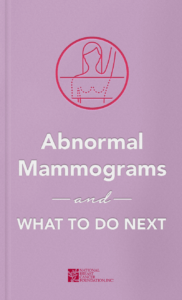MRI

How Does A Breast MRI Help To Diagnose Breast Cancer?
During diagnostic examinations, it is helpful to get a variety of images and perspectives. If your initial exams are not conclusive, your doctor may recommend a breast MRI (magnetic resonance imaging) to assess the size and specific location within the breast. An MRI can also identify any other abnormal findings within the breast.
During a breast MRI, a magnet connected to a computer transmits magnetic energy and radio waves (not radiation) through the breast tissue. It scans the tissue, making detailed pictures of areas within the breast. These images help the medical team distinguish between normal and diseased tissue.

Dense Breast Tissue
For women with very dense breast tissue and a family history of breast cancer, it is standard of care to get a breast MRI done annually, as well as a mammogram annually, rotating these imaging studies every 6 months (mammogram, then 6 months later a breast MRI, then 6 months later a mammogram, etc.).
Beginning in late 2024, radiologists will be required to report the degree of density found within a woman’s breast tissue since highly dense breast tissue is considered a risk factor for developing breast cancer. Having dense breast tissue can also make mammogram images harder to read and interpret, which is why additional testing is often required for women with dense breast tissue.
Abnormal mammogram result? Be informed and ask the right questions.
Si tu mamografía de detección fue anormal, no te alarmes. El recurso gratuito Mamografías Anormales y Qué Hacer Después explica los distintos estudios que podrías necesitar e incluye una lista de preguntas clave para hacerle a tu médico en tu próxima cita.
Prepárate para comprender tus resultados y tomar decisiones informadas sobre los próximos pasos.
Solo disponible en inglés.
¿A dónde te enviamos tu guía gratuita?

Material on this site courtesy of:



